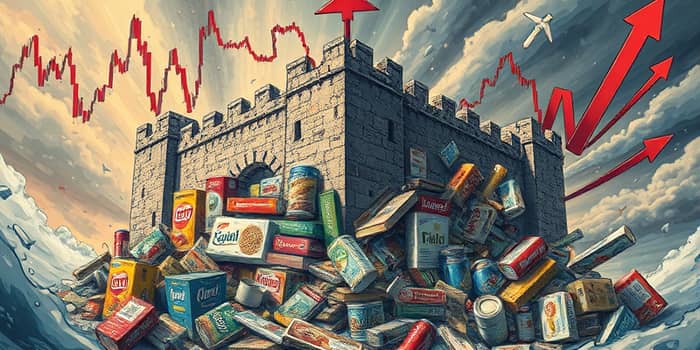
For decades, consumer staples have been the bedrock of defensive investing, offering shelter in the storm of market volatility. Yet, as 2025 unfolds, this once-reliable fortress shows cracks that demand attention and adaptation.
In this article, we journey through the sector’s storied past, unpack current performance data, explore emerging risks, and offer practical guidance for investors seeking clarity in uncertain times.
Historically, consumer staples—companies providing essentials such as food, beverages, and household goods—served as a bastion against economic downturns. In recessions, demand for these products remained remarkably steady, underpinning stable demand even during downturns that contrasted sharply with more cyclical industries.
Investors were drawn to resilient dividend payouts and reliable cash flows, using staples as ballast in balanced portfolios. Across expansionary and contractionary cycles, staples delivered consistent, if unspectacular, returns that helped weather storms.
In the twelve months through June 2025, the Consumer Staples sector returned an impressive 15.8%, edging past the S&P 500’s 14.4% gain. The first quarter of 2025 alone saw staples yield 4.6%, ranking among the top defensive performers behind energy and health care.
Exchange-traded funds like the Vanguard Consumer Staples ETF are up over 5% year to date, even as consumer discretionary dips nearly 7%. Yet beneath these numbers lie signals that the defensive narrative may be fraying.
Despite its defensive reputation, the sector now grapples with mounting pressures. Tariffs and trade tensions have driven up input costs, while only a handful of products rely on imported components. At the same time, a strong U.S. dollar has weighed on foreign revenue streams.
Meanwhile, commodity inflation nudges margins lower, and regulatory shifts loom amid changing political winds. Investors must confront the reality that staples may no longer offer the same cushion they once did.
One critical warning sign is the narrowing valuation gap between staples and more growth-oriented sectors. Historically, staples traded at a discount to discretionary stocks—reflecting their lower growth profile. Today, their price/earnings multiples stand near parity, a shift that hints at diminished upside as valuations catch up.
With limited innovation drivers and top-line growth dependent largely on price hikes, staples risk becoming value traps in defensive sectors if broader market sentiment turns more optimistic.
Major asset managers warn of potential rotation back into technology and discretionary companies should economic growth hold steady. If investors regain appetite for risk, sectors with stronger earnings momentum and lower valuations could outperform staples.
While staples may still offer moderate insulation against shocks, a static, blanket allocation no longer suffices. Savvy investors are rethinking their defensive strategies, embracing selective exposure to high-quality brands and staying agile.
By combining rigorous valuation discipline with forward-looking scenario planning, investors can navigate the evolving landscape with confidence. Whether adjusting weightings or seeking fresh opportunities, embracing change is key.
Ultimately, the fall of consumer staples as a safe haven is not a sign of failure, but a reminder that markets—and opportunities—are always in flux. Those who adapt will find new pathways to stability and growth in the chapters ahead.
References













